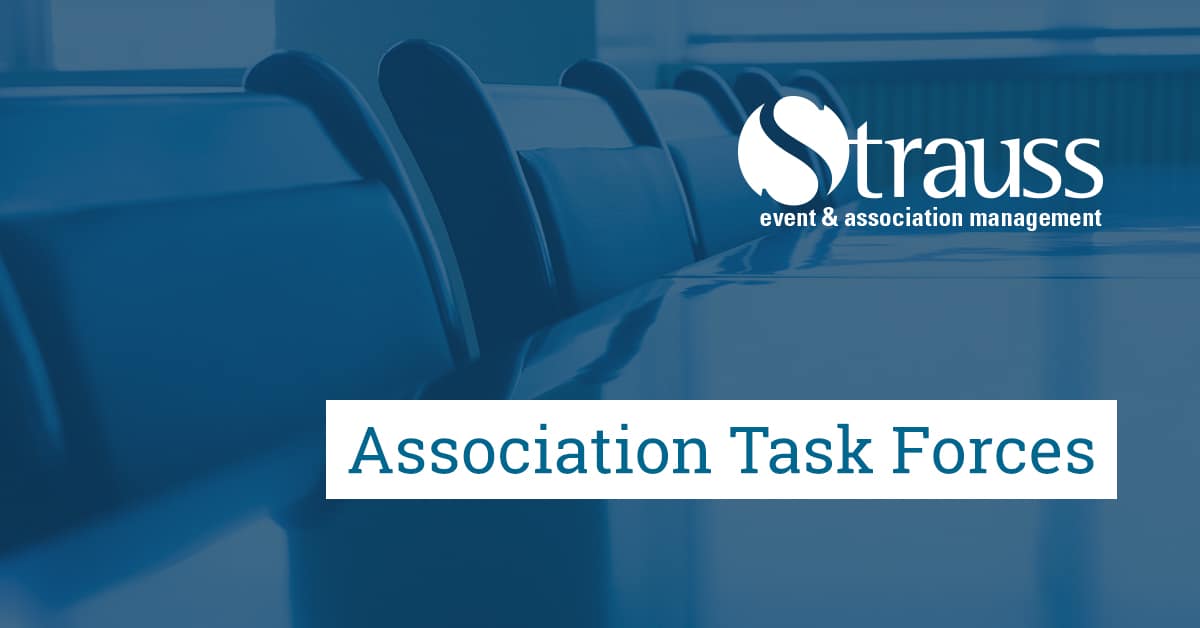An association’s reputation comes from the work of the association board of directors and its various committees. These groups are mostly responsible for ongoing the policies of an association. But the unsung heroes of the behind-the-scenes progression of an association are its task forces.
What is a Task Force?
Association task forces create solutions for things that don’t work as well as they could. Contrary to a committee, they will always have a specific and narrow mandate and will only be in place for a short amount of time. A task force is a group of select volunteers make recommendations and find solutions the board of director’s concerns about the association.
Association Task Forces vs. Committees
A task force differs from an association committee for a few reasons. They differ in terms of:
- purpose/goals
- their members
- timelines/commitment
Purpose/Goals
The purpose of a committee is to ensure that that area of the association (i.e.: communications, exams, complaints & discipline) is operating consistently and correctly. Their goal is to create and execute an annual plan that helps the association as a whole run smoothly.
Whereas, as previously mentioned, the purpose of a task force is to solve an imminent issue within an association. There is always a clear and tangible goal. The task force’s purpose is to find a path to reach that goal.
Members
Committee members are volunteers who want to get involved in their industry or profession. Committee members will need to have some experience in the committee’s purpose, but a lot of it is based on its members having the time and willingness to contribute to the wellbeing of the association.
Conversely, task force members are more likely to be hand-picked by the board or executives due to their background, expertise and experience. Task force members are specifically asked to assist the association in creating a solution because they have expertise in the area in question.
Association staff can be part of both committees and task forces when appropriate; staff would be responsible for coordinating the details of meetings and agendas.
Timelines/Commitment
Associations will recruit committee members based on a set timeline. The time commitment will likely fall into the range of one to three years of sitting on a committee, contributing x-number of hours of volunteer work per month, and attending x-amount of regular committee meetings via teleconference or elsewhere per year.
For association task forces, the time commitment cannot be pre-determined. The task force is done their job only after the presenting a solution and an execution plan to the board. The purpose of a task force is to have them complete a heavy workload in a short amount of time. A task force is active perhaps for a few months depending on the severity of the problem. If the timeframe of a task force is extending too long, its mandate may need to become part of a standing or new committee instead.
When does an Association need a Task Force?
The need for a task force will develop at the board level. Once the board has established that there is a need to carry a conversation beyond the board room table, and that it would not fall into the scope of a dedicated committee, a task force is born. These conversations usually originate when the board believes that a process, system, document or procedure is not working as well as it could be for the association.
A task force could be developed to re-work a by-law or policy, to reevaluate the alignment of a certification exam, to come up with marketing recommendations or to design a platform to coordinate awards and scholarships; the possibilities are endless, and a task force could be your solution! Reference my colleague’s blog about keeping your board on track to learn more about this.
Coordinating Task Forces
Remember, your task force was curated with experts that will work together to point the association in a better direction. As much as they are a part of this task force, they also have a full-time job. These volunteers are likely committing their free time or their lunch hour to volunteering with the association.
The coordinator must be patient when waiting for email responses, but more importantly, they must be consistent and efficient with all task force communications. Utilize tools like Doodle poll to establish availability for meetings, Google Docs for the whole team to work, and Zoom to easily screen share during meetings. Always ensure to have a set agenda/plan for each meeting and send out any documents needed for a meeting beforehand. Also ask for members to send any questions or concerns by email before a meeting, so that everyone has time to think before discussing. Please refer to my colleague’s blog about maintaining successful virtual committees and task forces for more information.
Once a meeting takes place, prepare a summary of decisions and tasks. Set up your next meeting in the same email. This ensures that members are receiving regular and efficient communications from the coordinator. After all, the progression of the task force is up to the coordinator; they are responsible for scheduling required meetings and providing consistent communication.

